Read Shooting 007: And Other Celluloid Adventures Online
Authors: Sir Roger Moore Alec Mills
Shooting 007: And Other Celluloid Adventures (15 page)

So now a new era begins with Paul Beeson, working on films for Walt Disney:
Greyfriars
Bobby
,
The Prince and the Pauper
,
In Search of the Castaways
,
Three Lives of Thomasina
,
Dr Syn, Alias the Scarecrow
and
Moon-Spinners
. Others included
Tarzan Goes to India
and
Monster of Terror
, the latter with an ageing Boris Karloff.
Disney films always featured family entertainment with colourful cinematography and bold filter combinations creating a ‘fantasy-land’ appearance. With this in mind, I hoped to gain more from working with Paul and take notes about what he did before asking why, looking to learn from his imaginative lighting. This would not happen. Unlike Harry Waxman, Paul was not one to share his expertise with me or anyone who cared to ask, although this should not detract from the fact that Paul was a fine cinematographer.
Looking back on my Beeson era, two private moments come to mind, both of which have stayed with me and both from the
Tarzan
film, leaving a respectful memory of Paul.
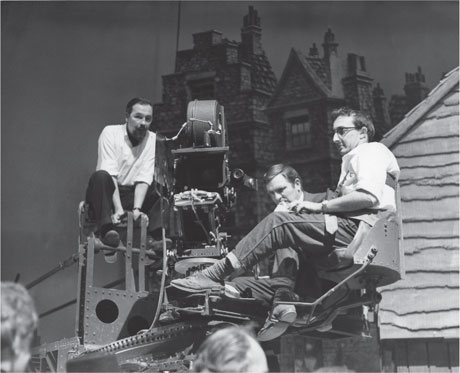
Greyfriars Bobby
was filmed in 1961 for Walt Disney at Shepperton Studios, the story of a faithful dog which stayed by his master’s grave for years after his death. From left to right: Don Chaffey (director), Herbert Smith (camera operator) and yours truly as focus puller, now slowly working his way up the ladder.
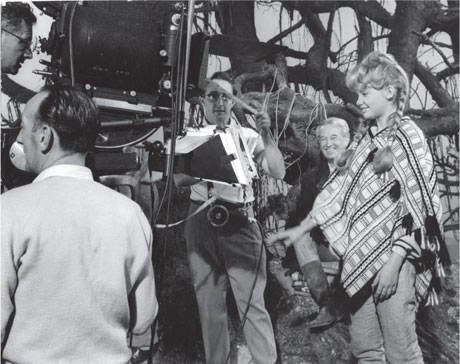
Working on
In Search of the Castaways
in 1962. Maurice Chevalier with Hayley Mills standing in front of camera. I am holding the essential focus puller’s tape with David Harcourt behind camera.
It was late, on a hot sticky summer night when I arrived in Bombay (Mumbai today). The atmosphere was humid and the odd shop remained open to compete for the few customers who might still be around. Godfrey Godar, Paul’s camera operator, met me at the airport and suggested that we purchased practical clothing for the location where we would be filming. Although I was tired we went shopping to buy khaki jackets with shorts to match, white socks and boots – ‘uniforms the Brits wear in India’, the tailor suggested. He was mocking, of course; they were the uniforms the colonials had dressed in.
That colonial image quickly disappeared as reality sank in. Kitted out in my stylish new clothing, an early call required me to make a long trek carrying the camera equipment through thick bush – I hesitate to call it jungle but the foliage was too thick for transport of any kind, with everyone staying in single file close together. I was the last in line, carrying the camera.
Fifteen minutes or so of carrying heavy equipment would inevitably take its toll as I fell behind the rest of the party. Suddenly I came across a mound of earth where a young woman sat, cradling her arms around a tiny child drinking water from a Coca-Cola tin. I stopped … the sight startled me. The young woman looked at me and smiled before turning her attention back to the child without a word spoken between us. I cannot explain why, but that image remains with me to this day, possibly a reminder of how lucky I have been in life and how fortunate the Mills family are. Then an afterthought struck me – what an idiot I looked in my smart new clothes! It was something else to consider after this meeting. Was this pre-set by destiny to make me think, or just another chance encounter?
On another occasion we were filming in a remote part of India when the generator driver told the production office that his wife had died and he asked to be allowed to return home to cremate his wife. The man was very upset. Although the Indian production manager was sympathetic to the driver’s problem and agreed to let him go, he refused to pay his fare. The electrician could not afford the price so Paul generously gave the man cash for the round trip.
When he returned to work, the electrician remained inconsolable. One day, driving at speed, whether by accident or a deliberate act, he crashed the generator and died in the incident. Paul represented the British crew and attended the funeral pyre, paying his respects to a colleague. Where did Paul’s compassion come from? I would later learn that Paul had been an officer in the navy, so perhaps it was time to reappraise those wardroom ‘pigs’ and ask questions about my own moral fibre.
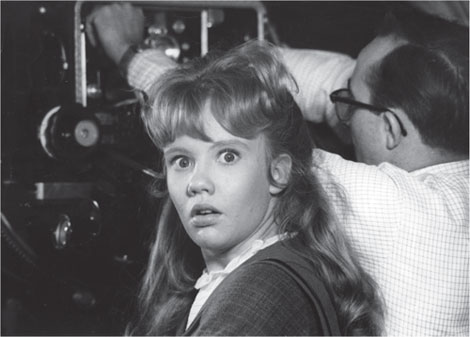
Hayley Mills snapped while looking over my shoulder – she was probably checking to make sure that I was lacing it correctly!
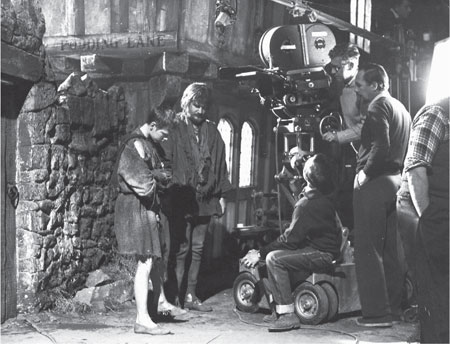
Working on
The Prince and the Pauper
(1961) for Walt Disney at Shepperton Studios. The young lad in front of the camera was Sean Scully, a Walt Disney mainstay of the time who would also appear in
Dr Syn, Alias the Scarecrow
. David Harcourt is operating the camera while I sit on the front of the camera dolly, hoping that one day someone will invent a remote focus control!
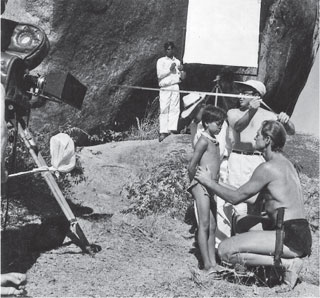
Tarzan in India
(1962), with Jock Mahoney in the lead role of Tarzan.
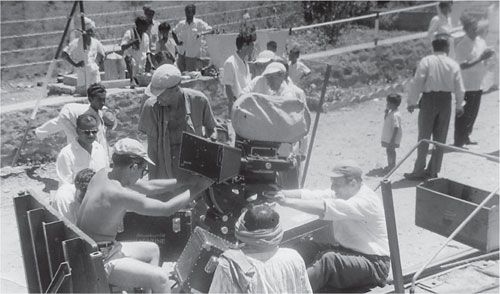
On location for
Tarzan in India
. I’m the one adjusting the camera for camera operator Godfrey Godar (seated with cap).
Jock Mahoney was the latest Tarzan, with Jai the ever-present elephant boy helping him. The story in this film concerned the building of a dam servicing a power plant which would inevitably flood the land and kill many elephants in the process. Our hero would, of course, require an adversary, and Leo Gordon played the customary villain in the piece.
The director, John Guillermin, with whom I had worked in the past, continued to impress me with his animated drive and energy; this lively approach to filming was John’s particular style. In the future we would work on other films, in particular one by the name
King Kong Lives
, although that was still a long way off. By that time I would be John’s cinematographer, which in turn would lead to a very important step in my career.
Perhaps with my frankness and personal beliefs I could be labelled an oddball; no longer does that bother me, so take what you will from negative thoughts or comments. Let me make this clear: I believe in fate, my destiny – call it what you will – as you will have picked up from the odd clue in my writing. The reality is that I am comfortable admitting to this, providing that fate or coincidence do not become entangled.
The next family milestone was to buy Cherry Trees, a sixteenth-century thatched cottage in a pretty Buckinghamshire village, where the property sat high on a hill overlooking the landscape of the beautiful Chiltern Hills – truly a joy to wake up to. Although the property was expensive for our insufficient finances there was something ‘different’ about Cherry Trees which in a strange way attracted our attention. It was certainly different from other properties we visited. We decided to go ahead and buy it, come what may, and to take the risk of unforeseen financial problems which might occur later. However, the financial worries quickly passed when I received an unexpected call from a gentleman suggesting that I should meet the cinematographer Carlo di Palma at a small studio in Holland Park. It was a name that I had not heard before, although it was obviously not English, leaving me to wonder how my name had come into this strange story.
It was a pleasant interview with Carlo. He was a quiet gentleman who carefully considered me and left me with me a sense of being ‘sized-up’ as we chatted away, before finally deciding that I would be the ‘chosen one’ to meet the director of
Blow-Up.


